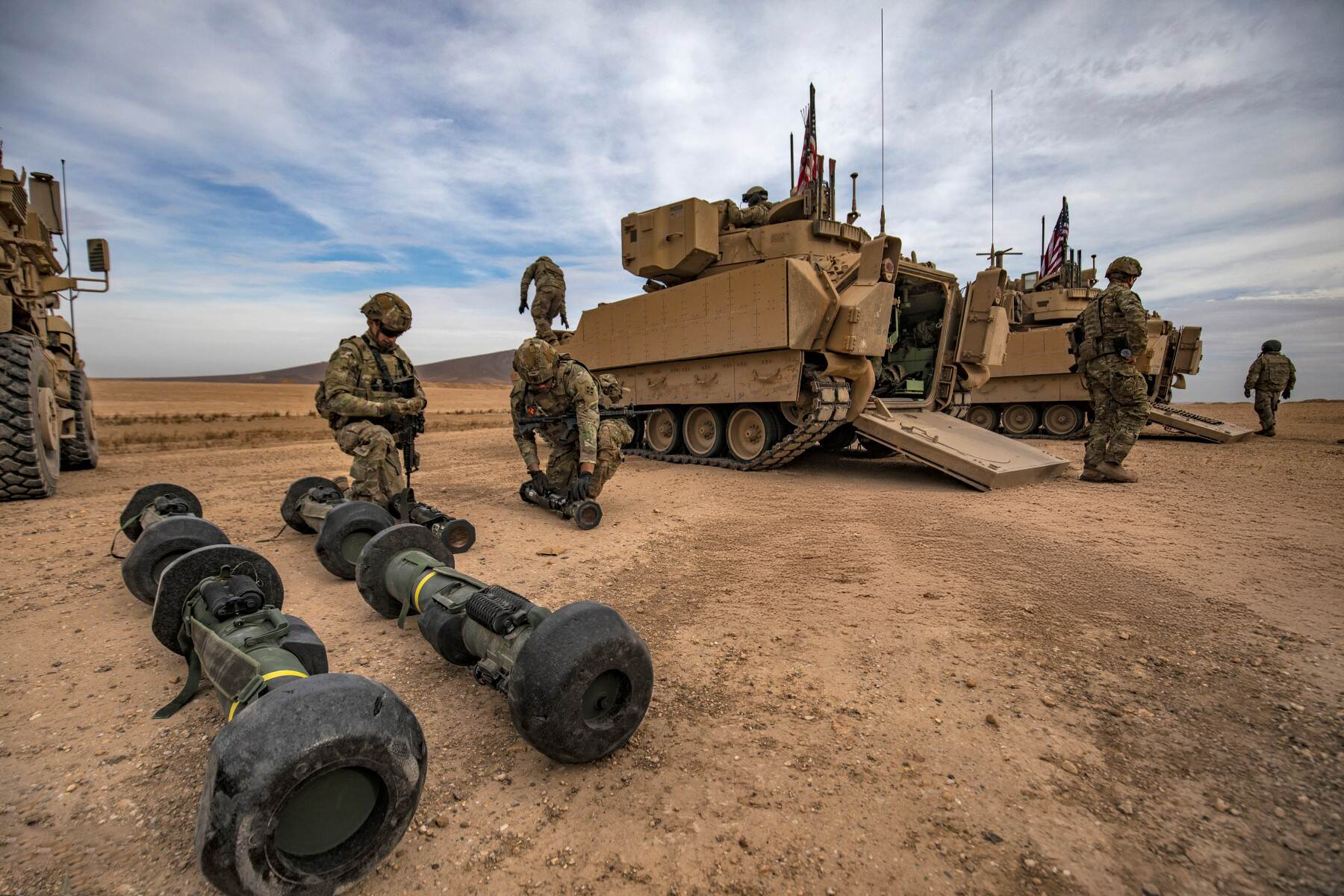U.S. Sends Advanced Military Supplies to Syria Despite Partial Pullout
While the U.S. recently withdrew approximately 600 troops and shuttered three military outposts, military officials insist that the core objectives remain unchanged, pending results of a broader strategic review.

By Ahora Qadi
ERBIL (Kurdistan24) – In a clear demonstration of continued U.S. military engagement in post-Assad Syria, a U.S. cargo aircraft escorted by two war helicopters delivered advanced military and logistical supplies to Hasakah province, despite a recent partial withdrawal of American forces.
On Saturday, the Syrian Observatory for Human Rights (SOHR) reported that a coalition aircraft landed at the "Kharab al-Jir" base in northern Hasakah northeast Syria (Western Kurdistan). The air cargo, heavily guarded, contained tactical equipment essential to ongoing U.S. operations in the region.
This strategic airdrop coincides with the Pentagon’s reassessment of its presence in Syria following the December 2024 collapse of the Assad regime. While the U.S. recently withdrew approximately 600 troops and shuttered three military outposts, military officials insist that the core objectives remain unchanged, pending results of a broader strategic review.
Convoy Crosses from Deir ez-Zor to Hasakah
In addition to the aerial deployment, U.S.-led coalition forces dispatched a significant military convoy carrying cement, advanced surveillance systems, fuel tankers, and other critical supplies from the Omar oil field and the Conico gas plant in Deir ez-Zor province. The convoy—comprising around 25 cargo trucks—was in route to coalition bases in Hasakah, underscoring the logistical depth and mobility of U.S. operations.
These reinforcements follow mounting concerns over the deteriorating security situation in Westrn , where the Syrian Democratic Forces (SDF), backed by the U.S., face escalating pressure from Turkish-backed factions, Arab tribal unrest, and a surge in ISIS activity. The U.S. has continued funding the SDF through the Counter-ISIS Train and Equip Fund (CTEF), providing stipends, non-lethal supplies, and operational support.
Interim Authorities Face Isolation
While the newly formed interim authorities, led by Ahmed al-Sharaa, have attempted to distance themselves from their jihadist origins—including the disbandment of Hay’at Tahrir al-Sham (HTS)—Washington has yet to recognize the transitional government. Al-Sharaa remains labeled a terrorist due to his past leadership of Jabhat al-Nusra. U.S. officials reaffirmed that any future recognition would hinge on the exclusion of extremist actors and protections for Syria’s ethnic and religious communities.
Humanitarian and Security Challenges Mount
The Lead Inspector General’s latest quarterly report for Operation Inherent Resolve (OIR), covering January to March 2025, described the landscape in Syria as “volatile and uncertain.” Despite intermittent repatriation efforts from al-Hol and Roj camps and operations against remaining ISIS cells in Raqqah and Deir ez-Zor, the humanitarian situation remains dire.
Over 82,800 internally displaced persons (IDPs) have attempted to return to their homes in northern Syria, particularly in Afrin and surrounding Turkish-held areas. However, public services are overwhelmed, and large numbers remain displaced amid ongoing conflict and governance vacuum.
